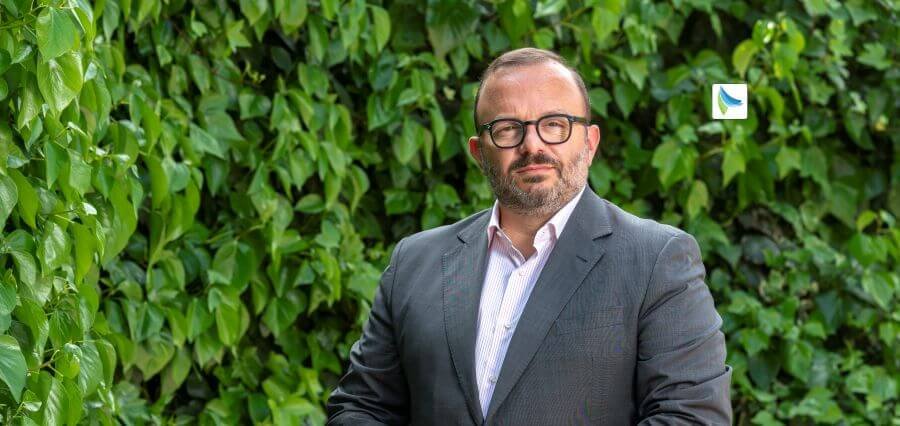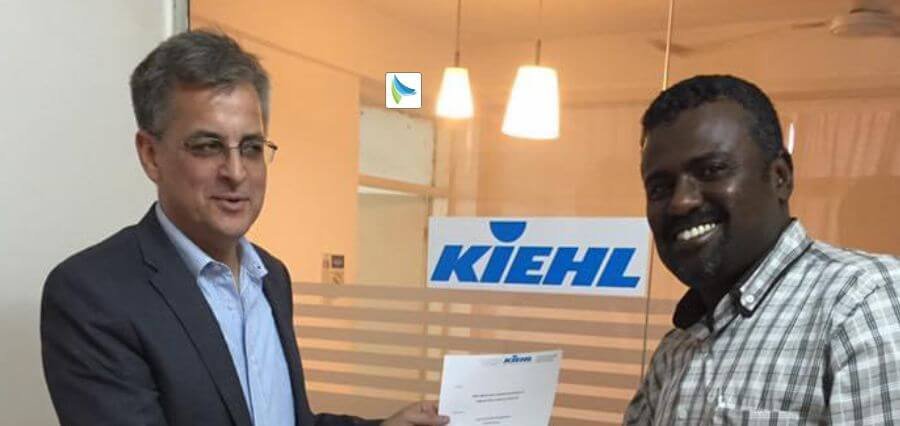Elevating Sustainability & Gravitational Innovation!
A sustainable provider of energy storage technology specializes in developing and supplying energy storage solutions that are environmentally friendly, economically viable, and socially responsible. These technologies aim to reduce greenhouse gas emissions, promote clean energy adoption, and contribute to a more sustainable and resilient energy infrastructure.
Revolutionizing Energy Storage with Gravitational Innovation, Green Gravity emerged as a tangible solution to contribute to the decarbonization of our industries. With 25 years of experience in a global mining company, Mark Swinnerton, Founder and President, the organization embarked on a journey to address the urgent need for decarbonizing industries.
This innovation impressed Insights Success, and thus, we interviewed Mark Swinnerton to understand how innovation can drive environmental sustainability and revolutionize the energy sector.
Below are the highlights of the interview:
Can you brief yourself on what motivated you to embark on this sector?
Prior to founding Green Gravity, I spent 25 years with a global mining company. As a mid-career professional, I took the view that insufficient progress is being made on decarbonizing the economy and that it would be inconsistent to criticize the lack of real action and not be taking real action myself. Accordingly, I left my mining career with the intention of starting an organization that could make a tangible difference in the decarbonization of our industries.
Can you brief about your company and its inception story?
Green Gravity is an Australian-based energy storage developer. Our Gravitational Energy Storage technology has been developed utilizing heavy objects moving vertically through legacy mineshafts to exchange electrical and gravitational potential energy. As heavy-weighted objects are raised through the mineshaft, energy is consumed to run the winch and motors, converting electrical energy into gravitational potential energy. When electrical energy is required, heavy-weighted objects are lowered through the mineshaft, generating energy as the descending weight spins the winch and causes the regenerative motor to generate electricity.
The inception of the company started in 2021 when Mark Swinnerton had elected to leave his career in mining. This was at a time when renewable energy development was accelerating in Australia, and problems with their integration into the grid were emerging. In investigating the issues, Mark identified the emerging and urgent need for energy storage technologies to be part of the renewable energy transition. With a background in mining, Mark was also investigating the nature of closed minesites to understand what challenges exist in rehabilitation, which ultimately led to the merging of these issues in the development of gravitational energy storage. In designing a system to take advantage of the resulting landform of a legacy mine, Green Gravity became the solution to two important and growing issues.
How do you ensure that your products/services are environmentally sustainable?
The purpose of our product is to store renewable energy so that it can be used when it is needed. Pleasingly, there is no business case for coal or gas-based power generation to use our technology, meaning by the very design of the technology, it is only of use to renewable energy.
In the deployment of the technology itself, Green Gravity allows for a strong circular economy outcome. Our business model is to reuse legacy mining infrastructure like the mineshaft so that we can minimize the resource use of our product.
How do you think the current environmental and regulatory landscape will affect your company’s growth?
The regulatory landscape is consistently increasing the standards and expectations for environmental outcomes. In relation to energy, there have been multiple changes to further accommodate new energy sources and technologies into the grid. We expect these changes will continue to be supportive of our product being accepted and enabled across multiple jurisdictions.
Regarding mine closure and rehabilitation, we believe that there will be further tightening on the expectations for mining companies to find productive and ecologically sensible uses for their legacy assets. We see this trend as supportive of our product.
How do you measure the impact of your company’s eco-friendly initiatives?
The most important measure is the capacity of energy storage delivered in the market. This drives sales but also drives the quantity of impact we can have on carbon emissions.
How does your company generate revenue while staying environmentally conscious, and what challenges have you faced in balancing profitability with sustainability?
Green Gravity is still pre-revenue. However, the revenue streams in our commercial model include sales of energy storage infrastructure, operations and maintenance of energy storage assets, and supply chain solutions to gravitational energy storage projects. These sales lines are consistent with our primary eco-centric drivers.
How does your solution address a specific environmental challenge, and can you provide examples of the impact your startup has had on the environment so far?
The environmental challenge we are working to resolve is related to carbon emissions from energy. As renewable energy is added to the grid to displace coal and gas, there is a resulting variability created due to the production profile of wind and solar energy.
Green Gravity has developed a technology to store renewable energy when it is produced and then reproduce the energy back to the grid when it is needed. This means the fundamental function of our product satisfies the environmental challenge we have identified.
Even while pre-revenue, we have been engaged by a major mining company to study the application of our technology to their mines. Commencing the study enabled the mining company to pause the scrapping of legacy infrastructure to preserve the option to reuse it should our project reach a positive investment decision. While a small example, it illustrates the positive impact we are already having on the waste stream from mining and on the increased range of technical options in consideration for renewable energy increases.
What advice would you give to an individual who wants to start an eco-friendly business?
The opportunity for founders in eco-friendly businesses is significant, and many people and organizations are supportive of people who are making a real effort to create an impact. In my experience, we have found companies from across the spectrum willing to provide additional support and assistance to help us succeed.
We have found many people willing to volunteer or provide expert assistance to us based on our company’s mission.
My advice is to focus strongly on the “why” of your eco-friendly enterprise and make sure the enterprise is true to the purpose for which it was set up. People will respect the intent.
In what ways do you collaborate with other eco-friendly startups or organizations to further promote sustainability?
We have co-located the headquarters of the company at the Innovation Campus of the University of Wollongong. This working environment, which includes many startups and many eco-friendly organizations, allows us to network and align ourselves with other eco leaders.
We are a member of many of the national renewable energy associations, and we are an active member of the University of Wollongong Climate Futures Institute.
What are your long-term goals for your eco-friendly business, and how do you plan to achieve them?
Our goal is to commercialize our technology and to deploy the technology globally. We plan to complete the demonstration at full scale during 2024 by testing the technology in a deep mineshaft. We expect to be constructing 500MWh of capacity by 2026, and our long-term goal is to have a disruptive impact on the global energy storage market.
Awards Recognition
Key points |
|
|
|
|
|
|



















